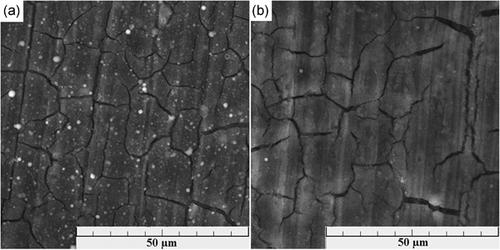当前位置:
X-MOL 学术
›
Mater. Corros.
›
论文详情
Our official English website, www.x-mol.net, welcomes your feedback! (Note: you will need to create a separate account there.)
Ultrathin hydroxyapatite coating on pure magnesium substrate prepared by pulsed electron ablation technique
Materials and Corrosion ( IF 1.8 ) Pub Date : 2020-06-28 , DOI: 10.1002/maco.202011721 Drahomir Dvorsky 1, 2 , Alessandro Gambardella 3 , Jiri Kubasek 1 , Matteo Berni 3 , Dalibor Vojtech 1
Materials and Corrosion ( IF 1.8 ) Pub Date : 2020-06-28 , DOI: 10.1002/maco.202011721 Drahomir Dvorsky 1, 2 , Alessandro Gambardella 3 , Jiri Kubasek 1 , Matteo Berni 3 , Dalibor Vojtech 1
Affiliation

|
Magnesium (Mg) as a potential material for biodegradable implants is attractive due to its mechanical similarity to the bone tissue and nontoxic corrosion products. However, the rapid corrosion rate of bare magnesium is associated with hydrogen release, which may complicate the healing process. The corrosion rate may be reduced by suitable alloying, but concurrently the biocompatibility of such alloy might be deteriorated. Another way of reduction of the corrosion rate is coating. Hydroxyapatite (HA)‐based coating is considered to improve biocompatibility as well as decrease the corrosion rate by the barrier effect. In this study, ultrathin (150 nm) HA and HA containing Sr coatings are deposited via pulsed electron ablation technique on pure Mg. The microstructure of the coating was assessed by scanning electron microscopy. Electrochemical methods were used to investigate the corrosion properties of prepared coatings. The materials covered by this layer were characterized by superior corrosion behavior, with corrosion rates of coated samples up to five times lower as compared with the uncoated ones. Such coating is the thinnest coating found in the literature sources.
中文翻译:

脉冲电子烧蚀技术在纯镁基体上制备超薄羟基磷灰石涂层
镁(Mg)作为可生物降解植入物的潜在材料,由于其与骨骼组织的机械相似性和无毒的腐蚀产物而具有吸引力。然而,裸露的镁的快速腐蚀速率与氢的释放有关,这可能使修复过程复杂化。通过适当的合金化可以降低腐蚀速率,但是同时这种合金的生物相容性可能劣化。降低腐蚀速率的另一种方法是涂层。基于羟基磷灰石(HA)的涂层被认为可以提高生物相容性,并通过阻挡作用降低腐蚀速率。在这项研究中,超薄(150 nm)HA和含HA Sr涂层通过脉冲电子烧蚀技术沉积在纯Mg上。通过扫描电子显微镜评估涂层的微观结构。电化学方法被用来研究所制备涂层的腐蚀性能。被该层覆盖的材料具有优异的腐蚀性能,与未涂覆样品相比,涂覆样品的腐蚀速率降低了五倍。这种涂层是文献资料中发现的最薄的涂层。
更新日期:2020-06-28
中文翻译:

脉冲电子烧蚀技术在纯镁基体上制备超薄羟基磷灰石涂层
镁(Mg)作为可生物降解植入物的潜在材料,由于其与骨骼组织的机械相似性和无毒的腐蚀产物而具有吸引力。然而,裸露的镁的快速腐蚀速率与氢的释放有关,这可能使修复过程复杂化。通过适当的合金化可以降低腐蚀速率,但是同时这种合金的生物相容性可能劣化。降低腐蚀速率的另一种方法是涂层。基于羟基磷灰石(HA)的涂层被认为可以提高生物相容性,并通过阻挡作用降低腐蚀速率。在这项研究中,超薄(150 nm)HA和含HA Sr涂层通过脉冲电子烧蚀技术沉积在纯Mg上。通过扫描电子显微镜评估涂层的微观结构。电化学方法被用来研究所制备涂层的腐蚀性能。被该层覆盖的材料具有优异的腐蚀性能,与未涂覆样品相比,涂覆样品的腐蚀速率降低了五倍。这种涂层是文献资料中发现的最薄的涂层。



























 京公网安备 11010802027423号
京公网安备 11010802027423号